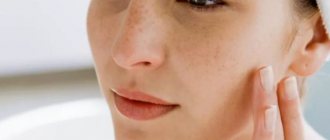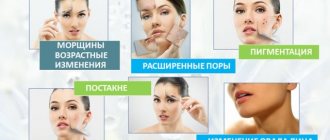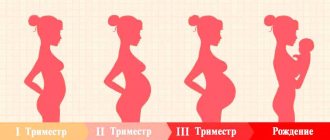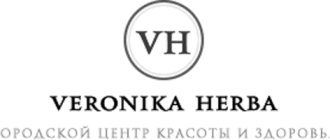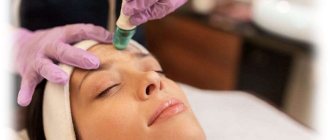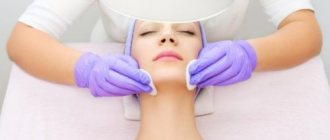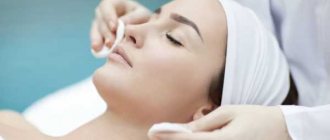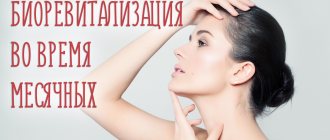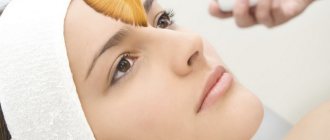Facial cleansing is the only way to cope with most defects, and the question of whether peeling can be done during pregnancy often worries women preparing to become mothers. Not all drugs used in skin cleansing procedures have an aggressive effect. Often women go to a beauty salon without fear, believing that soft, gentle ingredients will not harm the baby. It happens that they do not even warn the cosmetologist about pregnancy. This is a rather dangerous mistake that can lead to complications in the health or even development of the baby. Is it worth the risk, and what procedures for cleaning the dermis are considered the safest for the expectant mother and baby? To answer these troubling questions, you need to know the features of each type of peeling and contraindications to its implementation.
Critical periods of fetal formation
There are 3 critical periods during which the main formation of the fetus occurs:
- 2nd week of pregnancy – increased embryo metabolism
High risk of teratogenic effects of drugs.
- 2 – 8 weeks – period of organogenesis
The risk of developing malformations in the fetus due to toxic exposure.
- 18-22 weeks - the period of formation of neuroorgan connections, endocrine system, nervous system
Danger of defects in the structure and function of organs.
In the absence of clear indications and strict necessity, postpone cosmetic manipulations and the use of a number of external agents until the onset of the 2nd trimester (starting from the 14th week).
What procedures are contraindicated during pregnancy?
Biorevitalization
The essence of the procedure is to saturate the skin with hyaluronic acid through injections. This procedure allows you to correct existing wrinkles and give elasticity to the skin. The procedure can also be performed to prevent skin aging.
Botox injections
Botox or botulinum toxin is a weak and highly processed botulism neurotoxin. Injections of this toxin allow you to correct the shape of your face and smooth out facial wrinkles without surgery. The main purpose of Botox injections is to prevent the formation of wrinkles. When Botox is administered intramuscularly, the muscle is temporarily paralyzed. This allows the skin above expression lines to smooth out.
Electroprocedures
This type of procedure has many positive effects on the human body. However, how the body of a pregnant woman will behave under the influence of such procedures is still unknown to science. Electrical procedures are contraindicated for pregnant and lactating women.
Insolation procedures
The attitude of doctors towards these procedures is two-sided. “D” is the main hormone that is produced by cells under the influence of sunlight. If there is a lack of this hormone in the body of a pregnant woman, diabetes or rickets may develop in the child.
Most often, a lack of the hormone is observed in residents of northern countries where there is little sun. Therefore, if the supervising doctor deems it necessary, he can prescribe a course of insolation procedures for the pregnant woman.
Laser cosmetic procedures
The effect of laser procedures on the body has not yet been studied. However, during test studies, some cell disturbances were noted. Based on this, during lactation and pregnancy, procedures using radio waves and lasers are completely excluded.
For any pregnant woman, the health of the child should come first. Doctors categorically do not recommend resorting to injection and hardware procedures during pregnancy. If the doctor nevertheless prescribes something (most often it is lymphatic drainage, massage or insolation), then there is really a need for it.
LPG facial massage is your path to beauty
What kind of facial peelings are possible for pregnant women?
A woman desires to undergo a peeling procedure for a number of reasons, both objective and non-objective. Hormonal changes, fetal formation and the body's increased need for a number of substances often worsen the condition of the skin. And the free time that appears pushes the client to the cosmetologist’s office.
The specialist must act according to indications and taking into account data from official studies.
First, we will analyze the safety of using individual acids, based on available research data.
Glycolic acid
Recognized as absolutely safe in concentrations up to 70% due to insignificant penetration into the deep layers of the skin.
Lactic acid
Absolutely safe, even recommended for the treatment of acne during pregnancy.
Salicylic acid
Low concentrations up to 2% - absolutely safe to use
High concentrations up to 25%, treatment of large areas or the use of occlusion - has a “use with caution” statute
Products containing
- Vitamin A (retinol palmitate, retinaldehyde, retinoic acid)
- Salicylic acid in concentrations above 2%
- Benzoyl peroxide
Let's look at the types of peelings that pregnant women can use using the example of DermaQuest enriched peelings.
Recommendations from cosmetologists
Before you go for cleaning, you definitely need to find out what cosmetologists think about it. An experienced master will certainly explain how to properly get rid of unpleasant defects and whether this requires manipulation in a salon. Cosmetologists believe that peeling can be done during pregnancy only as a last resort - if the problems of the dermis do not respond to other, more gentle treatments. Be sure to go to a trusted beauty salon with an impeccable reputation for manipulation. You should first go to the doctor, who will authorize such procedures.
Cosmetologists warn that cleaning at home, without the supervision of a specialist, can be dangerous for the baby and the expectant mother, even if a completely harmless composition is used. Only a specialist can promptly notice skin complications and side effects and use the necessary remedies in such cases.
The easiest way to deal with problems is to carry out cleansing while planning a child. Often this is enough to avoid encountering dermal defects during pregnancy.
Despite the fact that peeling during pregnancy may be the only way to cope with skin problems, it is better to first think about whether it is worth risking the baby’s health. It is often better to wait until the baby is born and only then begin to get rid of skin defects.
List of approved DermaQuest peels
Milk peeling for delicate skin
Milk peeling with Hyaluronic acid is a professional enriched all-season peeling with moisturizing, restoring and healing effects. Restores skin barriers, works against glycation.
Ideal against dryness, tightness, discomfort, prevents pigmentation against irritated skin.
- Moisturizes the skin - lactic acid is part of NMF (skin moisturizing factor), restores the skin barrier function. Micronized hyaluronic acid – active hydration inside the skin.
- Lightens the skin , evens out tone and improves complexion.
- Eliminates dryness and tightness of the skin - removes hyperkeratosis and flaking.
- Smoothes superficial wrinkles and dry lines.
Immediately after the procedure, the skin takes on a fresh, healthy look, and the tone and complexion are evened out!
Peeling contains:
- Lactic acid 30% - gentle exfoliation of the skin, restoration of skin barriers;
- Phytic acid 5% – soft keratolytic + whitening;
- Micronized hyaluronic acid – moisturizes and restores the skin;
- Red Grape Stem Cells – prevents all manifestations of photoaging;
- ALISTIN (carnosine) – against skin glycation.
A video with the stages of peeling and the results is here .
Peeling MangoBright
Peeling MangoBright is a professional enriched all-season peeling for age spots. Ideally works against age spots, acne, dry skin, dehydration and hyperkeratosis. Evens out skin tone and gives a fresh, rested look.
Peeling contains:
- Lactic acid 30% - in this concentration equally performs a delicate exfoliating effect (eliminates hyperkeratosis) and moisturizing, promoting the penetration of active ingredients from mango pulp;
- Phytic acid 5% is a mild keratolytic and powerful antioxidant, has an anti-tyrosinase effect (lightens the skin);
- Kojic acid 5% - also works to lighten the skin (tyrosinase blocker), has an antioxidant effect;
- The peeling contains Sweet Orange Stem Cells , which stimulate the synthetic activity of fibroblasts and have an antioxidant effect;
- Micronized hyaluronic acid – moisturizing and restoring the hydrolipid mantle of the skin;
Peeling is indicated for the correction of diffuse pigmentation of any origin, including after hyperinsolation;
Works against all symptoms of photoaging , lightens pigmentation, moisturizes and restores skin barriers, saturates the skin with antioxidants;
Recommended for glycolic acid intolerance and skin hypersensitivity.
A video with the stages of peeling and the results is here.
What procedures are acceptable for women “waiting for a miracle”?
The most important problem during pregnancy is swelling and, as a result, cellulite.
Cellulite is a change in the structure of the subcutaneous fat layer that disrupts the original shape of the adipose tissue. The reason for its appearance is increased production of estrogen. This hormone is produced in order for the body to maintain pregnancy.
The most effective method of treating cellulite is lymphatic drainage.
Lymphatic drainage is one of the methods of physiotherapy, based on the removal of excess fluid and metabolic products from the space between cells. This procedure restores venous circulation and lymph flow, which is evenly distributed throughout the body.
It should be remembered that any cosmetic procedure must be agreed upon with the observing specialist. In the event that a doctor for some reason does not recommend performing procedures, this is due solely to safety considerations.
Laser peeling
It is recommended to do it at least six months after birth. The procedure is used to remove:
- pigmentation;
- scar tissue;
- age-related changes on the skin.
Read also: Hydrophilic tiles
The laser itself is not dangerous, but it is a painful method that requires anesthesia. Anesthetics penetrate into the blood and can harm the child.
The result of laser peeling is unpredictable. During pregnancy, the skin swells and stretches. When hormone levels begin to decline, the effect achieved by laser peeling may not be as successful.
Contraindications
Carbon laser peeling is a universal procedure that does not have any serious side effects. After it there are no unpleasant consequences, as after medium acid peels or mechanical cleansing.
- After the procedure, there is a slight tingling sensation and a feeling of warmth in the skin of the treated area for 30 minutes;
- There may be slight redness if you have very sensitive epidermis. Don't worry, this side effect will go away on its own;
- After peeling, on days 2-4, slight peeling of the epidermis may appear, which can be removed with a high-quality moisturizer to quickly complete the renewal process.
No other complications were noted after the peeling.
The peeling procedure does not interfere with your normal lifestyle. The next day you can go to work, apply makeup (if you cannot do without it) and use your daily alcohol-free care products.
If you have decided to undergo the procedure for the first time and are worried about how your skin will react to laser exposure, then we recommend planning the procedure before the weekend, during which time possible redness will subside and the skin will recover from the impact.
We recommend using sunscreen before going outside for 2 weeks after carbon peeling. The sun's rays can cause age spots to appear, so it's best to prevent this.
How it works
Essentially, this type of peeling is a combination: a dioxide mixture that exfoliates dead epidermal cells, combined with laser heating. Contaminants located in the pores are drawn out by the nanogel. The most delicate and safest laser in comparison with other types of laser is used - neodymium. Its task is to remove dead skin cells while stimulating the production of new ones. Often, the result is noticeable after three to five sessions. If the dermis is too advanced, a course of seven procedures may be required. At the same time, expect that ten or more days should pass before each subsequent one (more precisely, your cosmetologist will tell you). The skin must have time to recover before a new visit.
In combination with mesotherapy, peeling brings noticeable results. But remember that other influences are excluded during this period. Moreover, you should not use it as a preparation for laser polishing.
Ultrasonic peeling
A hardware rejuvenation method performed by a cosmetologist. Ultrasonic waves affect only the upper layers of the epithelium, gently cleaning the pores and removing dead cells.
- The procedure is quick and painless. It is safe for pregnant women.
- During ultrasonic peeling, the integrity of the skin is not compromised, there is no redness or burns.
- Like glycolic or almond peels, ultrasonic cleaning can be performed without prior preparation.
- It is not necessary to avoid the sun after the procedure.
It should be taken into account that rosacea or exacerbation of acne may be a contraindication for ultrasonic peeling.
How does acid affect the skin?
To obtain the effect of acid peeling, different components are used, depending on the patient’s age, the condition of his skin, the depth and volume of defects. Each acid has its own mechanisms of action:
- Almond – gently penetrates into tissues, capable of breaking down fats. Reduces the appearance of defects, fights free radicals, and has antibacterial properties. Used to treat post-acne and acne scars. Mostly suitable for superficial peeling.
- Milk – optimal moisturizing and whitening. Restores skin turgor and elasticity, removes inflammation, reduces the depth of wrinkles.
- Retinoic – promotes collagen synthesis in the body, removes pigmentation. Smoothes out fine wrinkles and improves skin texture.
- Malic acid is a universal acid used to moisturize and saturate cells with oxygen and nutrients. Stimulates microcirculation.
- Glycolic – care for oily skin. Helps with scars, scars, post-acne, eliminates signs of age-related aging. Evens out the texture and tightens pores.
- Ferulic – helps eliminate the effects of ultraviolet exposure. Gently penetrates the dermis, inhibits the inflammatory process, and prevents redness.
- Salicylic acid – dissolves dead epidermal cells, provides deep cleaning of pores. Normalizes the functioning of the sebaceous glands, activates the production of collagen and elastin.
The type of composition for acid peeling, concentration, and exposure time are determined individually by the cosmetologist, depending on the condition of the skin and the age of the patient.
There are three main types of peeling:
- superficial – shallow effect on the epidermis (fruit, glycolic, almond, retinoic, milk);
- median – affects the dermis (salicylic acid, trichloroacetic acid, azelaic acid);
- deep - affects all layers of the skin, down to connective tissue and fiber (phenolic).
Penetrating into the epidermis, the acid burns damaged, old and keratinized tissue, while simultaneously stimulating high activity of regeneration, cell division and the appearance of new structures. Also, chemical exfoliation of the stratum corneum promotes the accelerated production of your own collagen and elastin.
Important! A deep type of cleansing effect is carried out exclusively in special clinic conditions by a cosmetologist. The use of anesthesia and monitoring of the patient's health condition is required.
Benefits of glycolic peeling at ST-CLINIC
Any procedure, including peeling with glycolic acid, is not prescribed to the patient unless necessary. In each individual case, the doctor conducts a comprehensive study of the problems and the causes of their occurrence. By contacting us, you can count on a more pronounced and lasting cosmetic effect from glycolic facial peeling.
Popular services
- Enzyme peeling
- Lip contouring
- Botulinum therapy
- Chemical peeling
- Bioreinforcement
- Contour plastic surgery of nasolabial folds
Peeling during pregnancy using fruit acids
Acid peeling involves cleansing the face with fruit acids. During pregnancy, malic, phytic and tartaric acids help cope with skin defects. A woman undergoes a superficial acid peel, which allows her to gently cleanse the dermis without consequences for the expectant mother and her baby.
Important! Before carrying out acid peeling during early pregnancy, it is better for a woman to consult several cosmetologists, and also completely eliminate any contraindications to this procedure.
Retinoic peeling and pregnancy
Retinoic (yellow) peeling eliminates many skin imperfections - acne, hyperpigmentation, acne, sagging, wrinkles, signs of photoaging, unhealthy shade and many other defects.
But all cosmetologists unanimously claim that yellow peeling and pregnancy are two completely incompatible things. Geneticists are also against this kind of procedure during gestation, since there is a lot of information about the teratogenic effect of yellow peeling on embryonic development. The danger comes from retinol - a substance that can provoke multiple mutations in the development of the fetus if its concentration in the female body exceeds the permissible norm.
